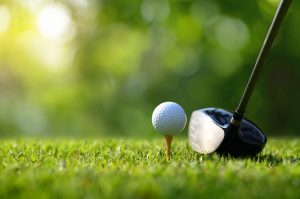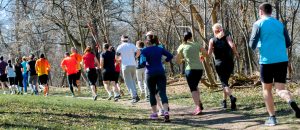
Kane Humphrey
Sports Physiotherapist
It is likely that you have stumbled across this blog because you are twiddling your thumbs bored at work and are wondering what it is like to work as a sports physio, just like the ones you see running on to a pitch during the footy or those working in a clinic. Perhaps you are a student contemplating your options, currently holding the magnifying glass over those ever so important questions of what you can actually see yourself doing over the next 30-40 years? Or maybe, just maybe, I am now a world famous Physiotherapist and you wanted to check out what it’s like to be me for a day. Ok, the latter is probably a little unlikely!
Daydreams aside, I won’t be able to depict the entire reality of what being a Sports Physiotherapist embodies in one brief written piece, mostly for the reason that many sports physio’s work in different settings with a variety of demands depending on the role they have. I will however, be able to provide you with an insight of what it is like to work a day in my shoes.
Just like any other role, there are the basics; I open the clinic, flick the lights on and boot up the laptop. I examine my patient list for the day to see if there are any new names and then I organise my paperwork accordingly (sounds fun so far, right?). I usually administer my morning caffeine fix around this point (because let’s face it, most of us are a little more perky and nice to be around after a good brew) and prepare the clinic room as I want it for the day. This usually entails having the correct stock in the room, wiping down all surfaces and dressing the plinth with couch roll. I also position the chairs in a particular manner so that my attention can be directed at my patients at all time, allowing me also to make notes as I need to (every physio has a process and preferences). Clinic room feng shui is underrated.
When my first patient of the day arrives, I greet them with a smile and invite them into the clinic room. I always like to ask about my patient’s week and if they have been up to anything exciting since I last saw them. Being professional doesn’t mean that you can’t be a human after all. When I have a new patient, I always introduce myself by name and check the patients name and time of appointment. I ease into the appointment in a conversational format, “how has training been going?”. Most of the time the patient will tell me 90% of the things I need to know to aid in directing the rest of the appointment. In my opinion, working with active and sporting populations has the benefit of the patient being a little more in tune with the rehabilitation process from the offset making the subjective questioning easier (most of the time). Once we have caught up on the events following the last appointment, we begin the objective assessment; this may include how the patient can move actively (without assistance), passively (me moving the patient), strength testing, and functional testing.
The functional testing is a whole lot of fun, this is when we get to play with the toys (rather expensive toys for that matter). This may involve using the Optojump, and/or dynamometer. The Optojump is a brilliant piece of kit as it allows clinicians like myself to obtain objective data for an array of testing protocols. Part of this process is to break down the physical demands if an individuals activity/sport and select the tests most pertinent to said demands. Of course, this all depends on the injury/condition and the patient’s presentation as to what we do on the day. Ongoing testing is crucial as this provides the information the patient and I the information we need to assess the effectiveness of the interventions (or on the rare occasion that they are ineffective so a change in approach can be implemented).
Treatment can also vary from patient to patient with a mixture of hands on treatment such as sports massage or exercise led therapy. The physiotherapy role in sport and active populations is continually evolving and one of the many arms we take up to fight injury includes strength and conditioning. The approaches for treatment utilised in our clinics for many musculoskeletal injuries/conditions ultimately derives from how the evidence base directing and influencing our clinical decision making. These approaches at present largely favour loading through exercise (for a large proportion of injuries/conditions). Therefore, this is what I find myself implementing into my patients treatment and rehabilitation plans the majority of the time. Other treatment modalities such as hands on treatments frequently serve as adjuncts, to aid in the management of pain for instance, allowing the rehab process to run effectively.
When I prescribe exercise, I ask the patient how they learn best whether that be visually, by listening, or by doing. I always ensure that any ‘homework’ I set is done so in a format that is preferable for the patient as communication matters. This means that I do a mixture of written programmes, videos with a narrative element, and sometimes voice notes. Some patients are gym competent whilst others are novices and are very much in the learning process. Coaching exercises brings me a lot of joy, you can make a big change in someones training very quickly; you continually develop a repertoire of coaching cues, tens if not a hundred to prompt technique changes.
After treatment, we head back to the clinic room and book in a follow up if required. I ask the patient if they have any further concerns, questions, and how they think the treatment session had gone. When indicated, a second batch of objective may be undertaken to compare and contrast to assess the effectiveness of the treatment providing symptoms and presentation. It is important that the patient understands the process, ‘what are we doing and why?’, as this will help with adherence. During my time as a student, I came across a simple yet elegant way of checking the patient’s comprehension regarding injury, treatment, and progression by Physiotherapist and researcher Kieran O’Sullivan. The question is slightly adapted as the context is different, however I will simply ask “how would you explain this injury/rehab plan/goals/results to date to your friends and family”. It allows me to then cover information that may not have been provided or reciprocated well enough. Payment is then processed, and I see the patient out. At this point, I will then update my medical notes which can take 5-10 minutes depending on the complexity of the patients injury/condition and the contents of the appointment.
Another delightful aspect of my role as a Sports Physiotherapist branches from one of the roles outlined by the Chartered Society of Physiotherapists, which is to “maintain health for people of all ages, helping patients to manage pain and prevent disease”. Essentially, I lead weekly strength and conditioning classes targeted at the general population with the primary focus directed at developing strength, whilst still integrating other forms of exercise and training methods to elicit benefits for all components of fitness. How the classes are organised changes periodically and truth be told, I have a lot of fun designing them for the clients we get in through the doors. I get to let loose a little in these sessions by turning the music up, coaching, chatting and creating a fun environment so that people can enjoy their training. Fun, along with safety always remain priority. In addition to the classes, I also run 1:1 sessions to work on specific goals that an individual has in a training capacity. My clients range from ages 15-84 years old. You may think to yourself that the 15 year old’s goals are different to the 84 year old and you would entirely right. That is why I love my job, each day is always different! The goals to an individual are always meaningful and so I genuinely don’t have a preference when training a 15 year old that wants to progress in their sport, the 40 year old office worker marathon junkie, or the 84 year old that wants to keep as healthy and strong enough for life’s demands for as long as they are able.
The end of the day much winds down as the day began. I shut the laptop down, switch the lights off, wipe down all surfaces and lock the clinic behind me as I leave. I usually go straight home, eat and then spend 30-60 minutes looking at research publications/resources depending on whether I have have encountered anything new or I need to reflect on the best course of action regarding treatment for the patient. In any given working day, I could see up to 21 patients/clients, although the average is most likely around 15-16. Each day brings about its own set of challenges and no two days are alike. I personally love the daily contrast.
So, you will gather by now that being a Sport Physiotherapist isn’t always wet sponges and massages. We have an extensive medical knowledge regarding injury and rehabilitation. We have an ability to reach into the academic literature and decipher how information from studies can best help our patients and clients. We are educators. We are coaches. We are rockstars with handling paperwork and note writing (alright, I really can’t glamorise that part). We are also driven towards helping our patients and clients.







